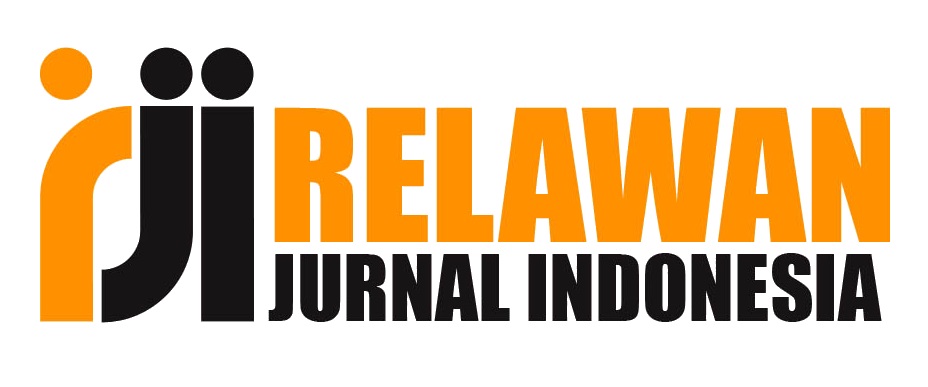ANALISIS PENGARUH TINGKAT PEMBANGUNAN INFRASTRUKTUR TERHADAP ANGKA KEMISKINAN DI KABUPATEN PENUKAL ABAB LEMATANG ILIR
DOI:
https://doi.org/10.52333/lateral.v3i1.815Keywords:
Infrastructure, Poverty rate, Health infrastructure, Education infrastructure, correlationAbstract
In the era of globalization, regional improvements can be seen through infrastructure development which is one of the important and essential aspects to accelerate the development process of a country and region. The central and regional governments continue to expand infrastructure throughout Indonesia every year. Infrastructure not only concerns the development of the transportation sector such as the construction of roads and bridges, but also basic service facilities in other sectors such as the business world, education, and health. The problem of poverty can be overcome by having infrastructure that supports the local community which can be done in the form of cooperation between business entities, this is stated in Presidential Regulation of the Republic of Indonesia Number 38 of 2015. The purpose of the study was to analyze the effect of the development of road, health, education and clean water infrastructure on poverty rates using correlation analysis and multiple regression analysis. The data obtained came from the Central Statistics Agency of PALI Regency from 2019 - 2023. The data will be analyzed using a descriptive and quantitative approach, namely explaining the trends that occur. The results of the study showed that the variable that greatly influenced the poverty rate was the human development index (HDI) with a Pearson correlation of 0.970 and a multiple regression coefficient of 0.448.
References
Zahra, K., Manalu, R. H. R., Nabillah, R., & Dewi, P. K. (2024). Analisis dampak pembangunan infrastruktur jalan terhadap pertumbuhan ekonomi kecamatan Medan Tembung. El-Mal: Jurnal Kajian Ekonomi & Bisnis Islam, 5(3), 1857-1866.
Matdoan, A., Ramly, A., Tamher, E. R., & Ingratubun, M. R. (2024). Analisis Pengaruh Pembangunan Infrastruktur Daerah Terhadap Tingkat Kemiskinan Di Kabupaten Maluku Tenggara. Management Studies and Entrepreneurship Journal (MSEJ), 5(2), 6176-6186
Afriyana, L., Salmah, E., Sriningsih, S., & Harsono, I. (2023). Analisis dampak pembangunan infrastruktur terhadap pertumbuhan ekonomi inklusif pada Kabupaten/Kota di Provinsi Nusa Tenggara Barat tahun 2016-2021. Elastisitas: Jurnal Ekonomi Pembangunan, 5(1), 1-12.
Rokhmat, A., Sasana, H., Nugroho, S. B. M., & Yusuf, E. (2020). Analisis Pengaruh Pembangunan Infrastruktur Pelayanan Dasar, Jalan Provinsi, Air Bersih, Hotel, Penginapan Dan Restoran Terhadap Produk Domestik Regional Bruto. Jurnal Riset Ekonomi Dan Bisnis, 13(2), 70-88.
Bustamam, N., Yulyanti, S., & Dewi, K. S. (2021). Analisis Faktor–Faktor Yang Mempengaruhi Indikator Kesejahteraan Masyarakat Di Kota Pekanbaru. Jurnal Ekonomi KIAT, 32(1).
Sari, Y. A. (2021). Pengaruh Upah Minimum Tingkat Pengangguran Terbuka dan Jumlah Penduduk Terhadap Kemiskinan Di Provinsi Jawa Tengah. Equilibrium, 10(2), 121–130.
Halim, S. N., Sonda, M., & Paereng, S. (2024). ANALISIS DAMPAK PEMBANGUNAN INFRASTRUKTUR JALAN TERHADAP KONDISI SOSIAL DAN EKONOMI MASYARAKAT DI JALAN IRIGASI. Jurnal Ekonomi dan Bisnis, 2(5), 539-550.
Ferlita, S., Saepudin, E. A., Maharani, P. S., Kurniawan, I. P., Susilawati, S., & Al Fauzan, R. Z. (2024). Analisis Pembangunan Nasional Pemerintah Pusat dan Daerah Dalam Pembangunan Infrastruktur di Indonesia. Journal of Multidisciplinary Inquiry in Science, Technology and Educational Research, 1(2), 189-195.











